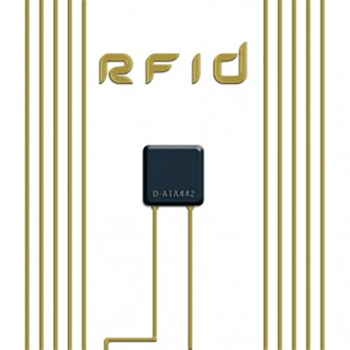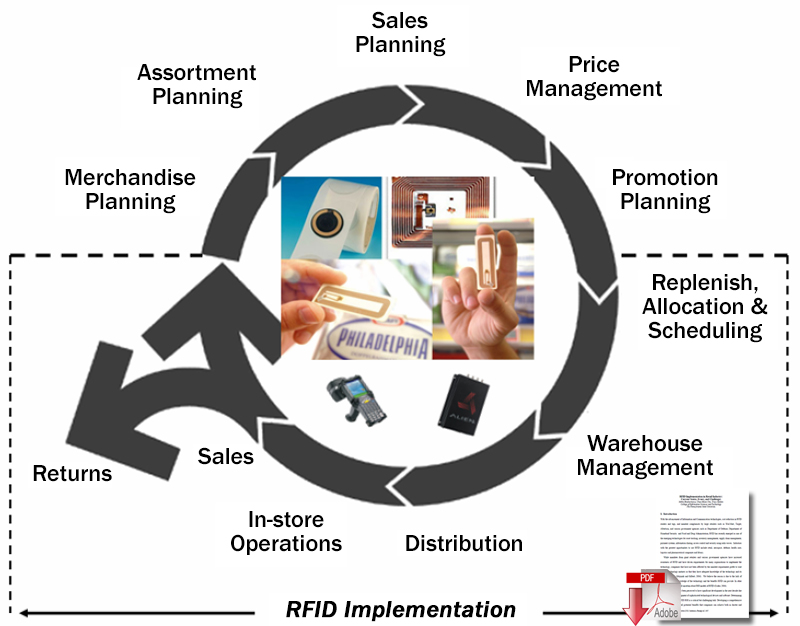RFID Implementation and the Price of Failure and Benefits of Success
Despite JC Penney’s $28 million mistake upon RFID implementation, RFID is here to stay. Retail industry leaders like Wal-Mart and Target have introduced RFID implementation mandates to suppliers.
Last month, JC Penney announced that mishandling of the transition from Electronic Article Surveillance (EAS) to Radio Frequency Identification (RFID) caused an unprecedented rise in shop lifting that resulted in $28 million in lost profits.
Many people unfamiliar with RFID devices and RFID implementation started to ask questions about this new technology, its applications, and why JC Penney would want to use it?
Understanding RFID before RFID Implementation is KEY
RFID is the use of an object embedded or incorporated into a product, item, or person with the intention of sending or receiving identification data by utilizing wireless signals. It was primarily developed for short-range product identification, normally in the 1 inch to 6 feet range. But RFID implementation has proven to be extremely successful in managing supply chains.
RFID tags come in two forms: passive or active. Passive tags no internal power source and sends signals when a reader or operator pings the tags, and are only useful in short range applications. This type of tag is an attractive option because it is less expensive and last longer than active tags. Active tags have an internal power source that enables a data to be saved to the tags, though this capability reduces the tag’s lifespan and raises costs.
Active tags are capable of being read and writable or read-only. Read-only tags emit a signal with a number unique to only that tag. Read and writable tags allow for many different types of data to be stored, read, and changed on the tag. Tags that are designed to be read-only will merely have a unique identifier that can be collected in transit.
In a retail environment, like JC Penney, RFID tags can improve inventory management, payment, and of course, asset protection. RFID implementation enables store managers to use what is known as “smart shelves.” Smart shelves are retail shelves that continuously track inventories of tagged items and automatically initiate reordering when stocks reach a specified level.
Additionally, multiple readers can be placed at multiple locations to create a network that can correlate information from the data collect from all the readers, which is called “asset tracking.” Asset tracking allows managers to determine the location of an item and identify if that item is in the right location or not.
Despite JC Penney’s $28 million mistake upon RFID implementation, RFID is here to stay. Retail industry leaders like Wal-Mart and Target have introduced RFID implementation mandates to suppliers. According to a study conducted by Pennsylvania State University, retailers that successfully implemented RFID saw the following benefits: 4% increase in sales, 8% increase in customer service, 11% cost reduction, 24% improved visibility, and 37% increase in operational efficiency.
Because of these and other benefits RFID implementation provides, RFID tags are being integrated into more and more aspects of business operations. As globalization increases and supply chains become longer and more complex, organizations will need to adopt and utilize new technologies that will enable them to efficiently and effectively manage and protect their inventory as it travels to the end user.
Article Topics
Cerasis News & Resources
GlobalTranz Appoints Executive Chairman Bob Farrell as Chief Executive Officer Amazon’s Drone Delivery Hits Milestone with Federal Aviation Administration Clearance Digital Supply Chain: The Landscape, Trends, Types, and the Application in Supply Chain Management Walmart’s Bid for TikTok Could Benefit the Retail Giant’s Ecommerce and Advertising Businesses The State of Ecommerce Logistics Heading into 2020 Peak Delivery Season Bringing Omnichannel to the Forefront of Ecommerce FedEx’s Fred Smith Optimistic About Economic Recovery as Ecommerce Business Booms More CerasisLatest in Warehouse|DC
U.S. Manufacturing is Growing but Employment Not Keeping Pace Maximize Warehouse Space with Mezzanine Automation: Expert Tips Most Companies Unprepared For Supply Chain Emergency Microsoft Unveils New AI Innovations For Warehouses Spotlight Startup: Cart.com is Reimagining Logistics Walmart and Swisslog Expand Partnership with New Texas Facility Taking Stock of Today’s Robotics Market and What the Future Holds More Warehouse|DC














